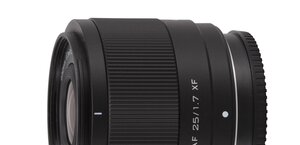Canon EF 50 mm f/1.8 STM
11. Summary
- excellent image quality in the frame centre,
- decent image quality on the edge of the frame,
- very good control of the chromatic aberration,
- moderate distortion,
- slight vignetting on the APS-C,
- moderate astigmatism,
- silent and accurate autofocus,
- very good price quality ratio.
Cons:
- huge vignetting on full frame,
- very high level of coma.
When compared to its predecessor the new Canon EF 50 mm f/1.8 STM features several crucial assets. They are especially visible when it comes to the build quality and the casing. With the newer model you get a metal mount, a bit more compact body and a manual focus ring which is actually useful. What’s more the producers increased the number of aperture blades and guaranteed a wider range of movement of the whole optical set so the new lens sets the focus already from 0.35 of a meter - undoubtedly the best result in this class of equipment.
Please Support UsIf you enjoy our reviews and articles, and you want us to continue our work please, support our website by donating through PayPal. The funds are going to be used for paying our editorial team, renting servers, and equipping our testing studio; only that way we will be able to continue providing you interesting content for free. |
- - - - - - - - - - - - - - - - - - - - - - - - - - - - - - - - - - - - - - - - - - - - - - - -
The autofocus constitutes another important change. After employing the STM motor the mechanism is silent and quick and you couldn’t say that much about its predecessor. There are less changes when it comes to the optics. The improvement of the resolution results on the edge of the frame is a very important difference but many other things stayed the same. There were no significant differences when it comes to the resolution in the frame centre, spherical and chromatic aberration, distortion, vignetting and astigmatism. What’s interesting, in the categories of coma and performance against bright light the older model actually seemed to fare a bit better.
Should we really be so demanding and ask for more? Of course if you want to criticize an instrument you’ll always find arguments; some of them might even be quite sensible. After all when Nikon decided to refresh their 1.8/50 model they offered a completely new optical construction featuring one element more and one made of aspherical glass. The changes introduced by Canon are more cosmetic; still you must remember the price. The Nikkor AF-S 50 mm f/1.8G costs more than 700 PLN even several years after its launch. The new Canon EF 50 mm f/1.8 STM comes with a price tag of a bit over 500 PLN which is just 100-150 PLN higher than the price of its predecessor.
Of course if Canon launched a completely new optical construction, based on 7 or 8 elements, its price would hover around 1000 PLN, not 500 PLN. Out of these two scenarios I admit I prefer the current one. I had reservations about recommending the EF 50 mm f/1.8 II model because of its inferior build quality and autofocus; when it comes to the new EF 50 mm f/1.8 STM I will recommend it willingly, mainly because of its favourable price/quality and price/performance ratio.






